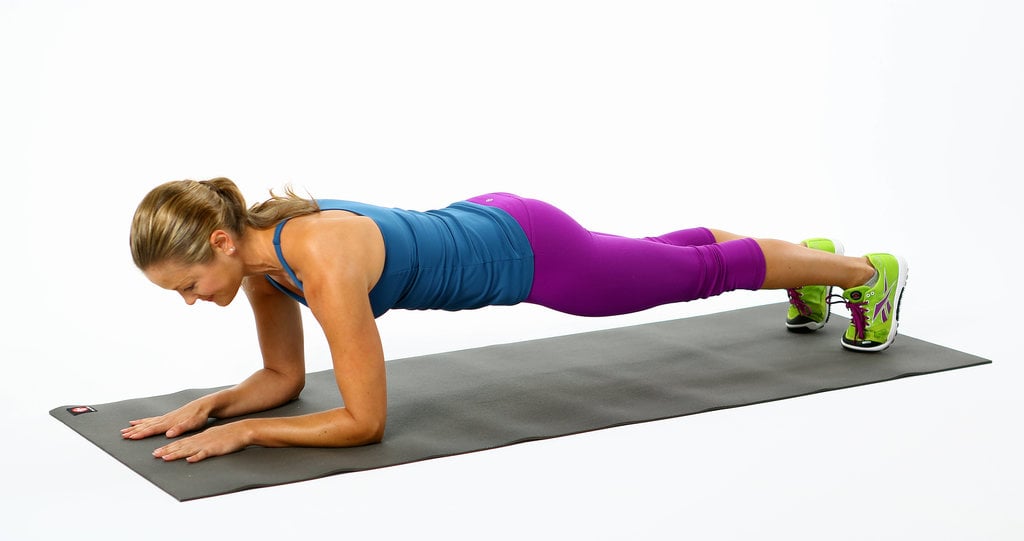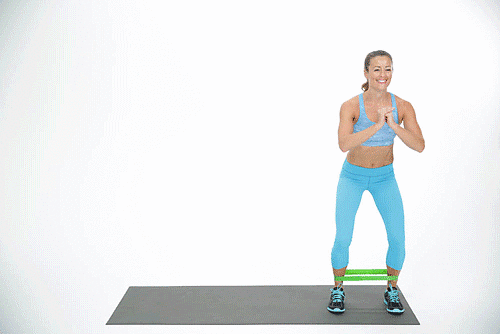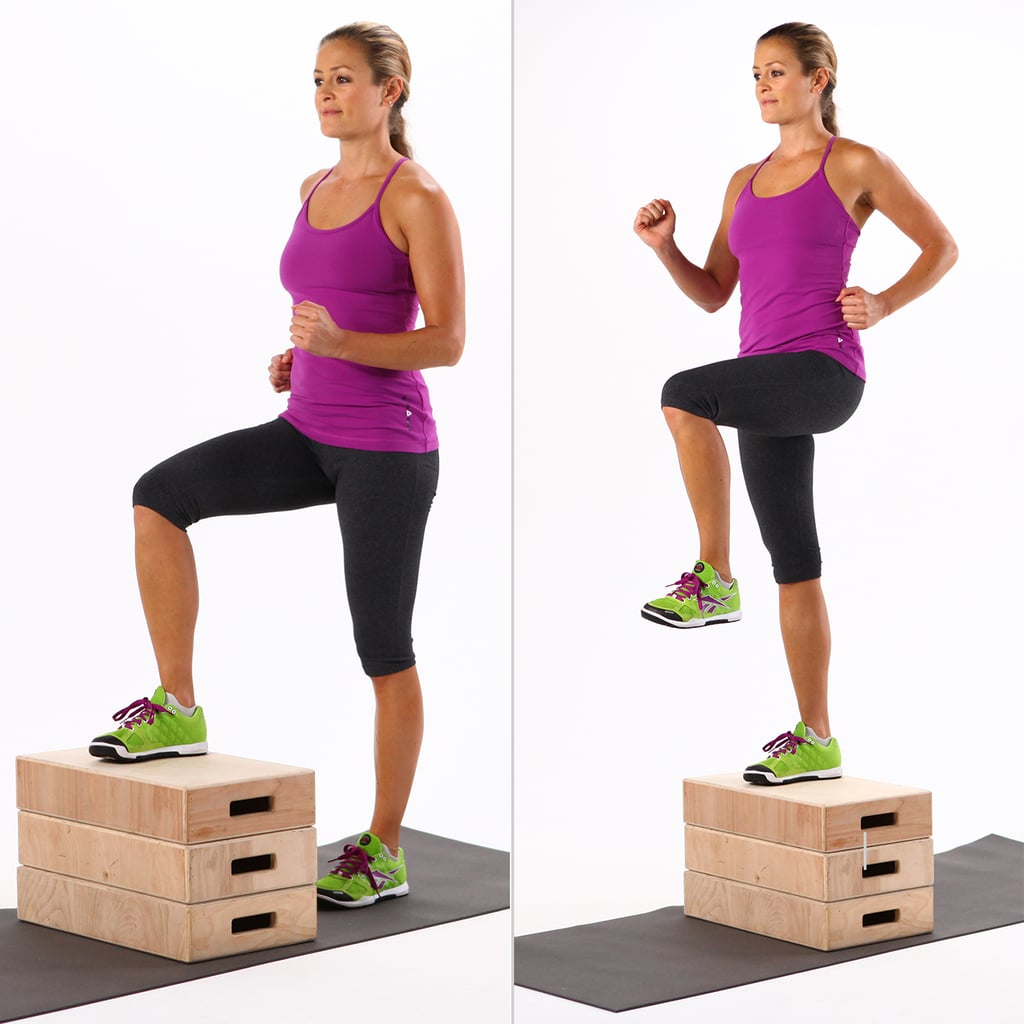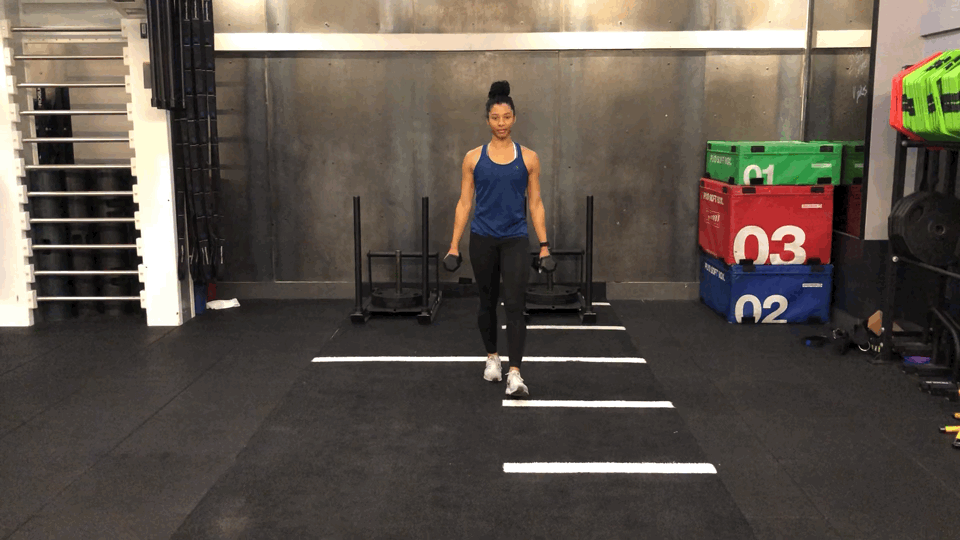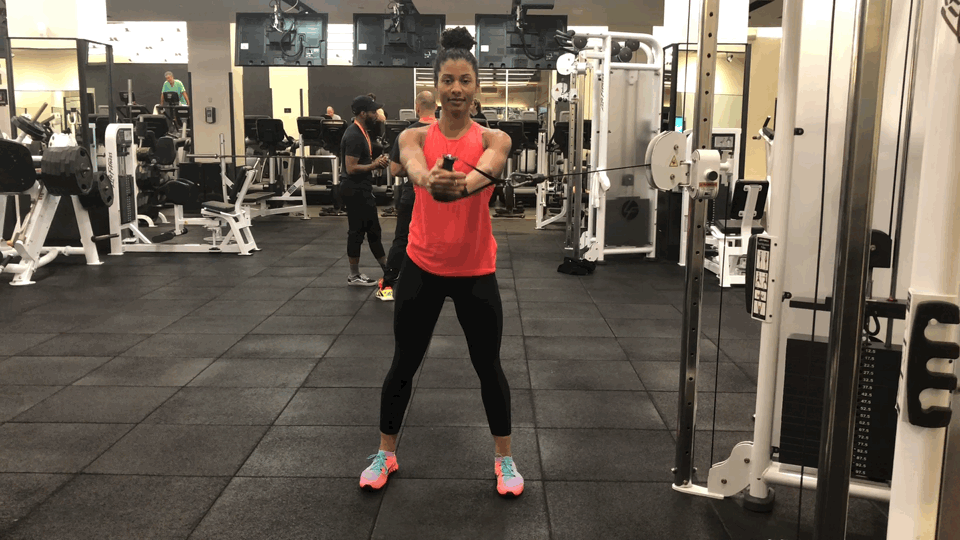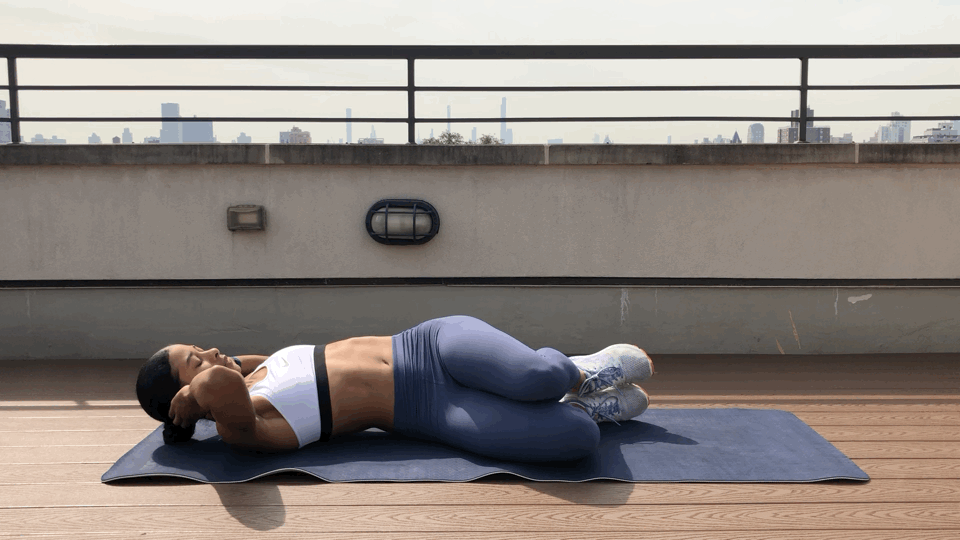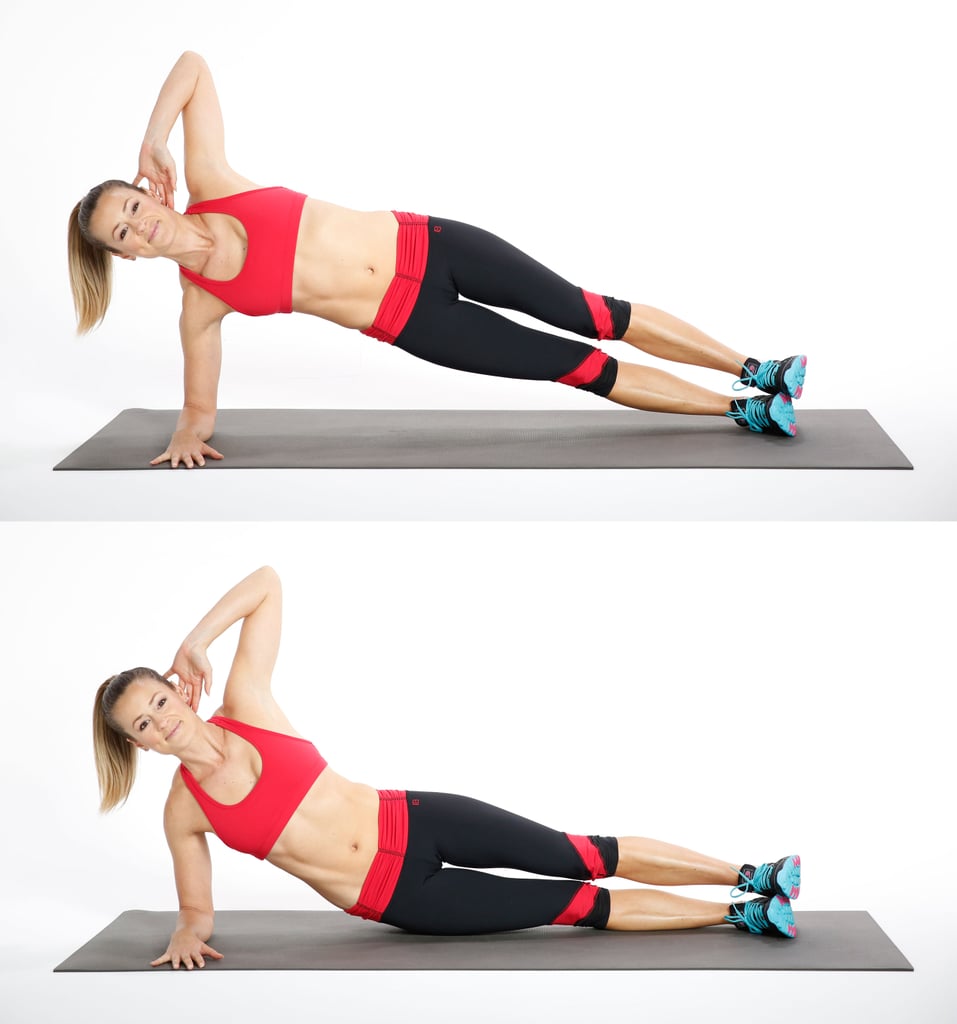If you haven't already figured it out, core strength and stability is important for all movement. Whether you're someone who likes to go on daily walks [1] or someone who is into strength training or ultramarathons, your core helps you move at your best. And if you're a runner, you guessed it, a strong core is a must!
"Core strength is extremely important for runners," Niraj Vora, DPT, cofounder of The Stride Shop [2], told POPSUGAR. "By being in tune with the core musculature, including the abdominals, obliques, back, and glutes, you will place your body in a better position to transfer energy," he explained. Having a stable core also allows for optimal use of your legs, which helps propel you forward as you run, Leada Malek [3], PT, DPT, CSCS, SCS, a board-certified sports physical therapist told POPSUGAR. Not to mention, the strength you use in your trunk to stabilise your moving body when you're running or playing a sport is essential to prevent injury, and it makes you more efficient at whatever activity you're participating in, Dr. Vora said.
So how do you know if you have a weak core? "It can be extremely hard to objectively assess core strength, but we can find clues in watching someone run," Dr. Vora explained. Hunching forward later in your runs, leaning back, and hyper-active arms are all indicators that your core isn't as strong as it should be. Additionally, Dr. Malek said, "hip, knee, and ankle 'dragging' through excessive range in strides," is an indicator of a weak core. So is excessive low-back extension with push off or excessive pelvic rotation during striding, she continued. Some people may also experience low back or hip flexor discomfort "as things surrounding the core are placed under more strain" when you have a weak core, Dr. Malek said.
Conversely, being able to hold a single-leg bridge for 30 seconds on each side, and holding a side plank with your top leg lifted for 20 seconds on each side are indicators that your core is strong and firing properly, according to Dr. Vora. Another indicator of a strong core is feeling and looking more explosive and efficient as you run, according to Dr. Malek.
To improve your core strength, Dr. Vora said you first have to understand the difference between core strength and stability. Core strength involves producing force via a specific exercise, whereas core stability is the ability to resist unwanted motion.
Instead of just focusing on strengthening movements like sit-ups and planks, Dr. Vora recommends focusing on slow, resisted movements of the lower body and trunk. A core-strengthening program that not only targets the six-pack muscles, but also the deep core stabilizers like the obliques, transverse abdominis, and multifidi is important, Dr. Malek said. "Coordinating the trunk muscles (core muscles) of the hips, lower back, and abdominals while running makes you an efficient runner," Dr. Vora said. And once your core muscles are targeted, Dr. Malek recommends focusing on secondary stabilizers and more "global" core muscles like the erector spinae, glutes, and hamstrings.
There isn't one perfect exercise to improve your core strength, and the "best" moves will vary from person to person based on variables such as your ability and base strength. Ahead, we've rounded up exercises from physical therapists and trainers that can help to improve your core strength. This isn't a workout, and we don't recommend doing all of these exercises at once. If you have specific questions about your core or want to know more about your running posture, we recommend working with experts like a physical therapist who can create a custom program based on your abilities and goals.
Elbow Plank
Dr. Malek recommends adding front planks into your routine two to four times a week to strengthen your core and maintain endurance of your core stabilizers.
- Start face down on the floor resting on your forearms and knees.
- Push off the floor, raising up off your knees onto your toes and resting mainly on your elbows.
- Contract your abdominals to keep yourself up and prevent your booty from sticking up.
- Keep your back flat — don't let it droop or you'll be defeating the purpose. Picture your body as a long straight board, or plank.
- Hold for 30 to 60 seconds, and complete a total of three sets.
Superman
Dr. Malek said doing the superman two to four times a week will help improve your core strength.
- Lie face down on your stomach with arms and legs extended. Keep your neck in a neutral position.
- Keeping your arms and legs straight (but not locked) and torso stationary, simultaneously lift your arms and legs up toward the ceiling to form an elongated "u" shape with your body — back arches and arms and legs lift several inches off the floor.
- Hold for 30 seconds, and complete a total of three sets.
Dead Bug
Dead bug is a classic core-strengthening exercise, and Dr. Malek agreed that this move can help strengthen your core. She recommends performing it two to four times a week.
- Lie on your back with a neutral spine and your hips and knees at right angles with your palms pressed into your thighs just above your knees.
- Pull your abs to your spine keeping your ribs and pelvis still as you lengthen your right arm and leg out until they are almost parallel to the floor. Keep your torso and spine completely stable as the arm and leg move.
- Return to the starting position, and repeat on the left side to complete one rep.
- Perform eight to 15 reps, and complete a total of three sets.
Lateral Band Walk
"Core strength is important for everyone, but even more so for runners. It's really difficult to run efficiently and pain free if your hips are moving all over the place. When your centre, aka your core, is stable and held in place, your legs can move more efficiently," Wendy Cao [6], PT, DPT, SCS, CSCS, CF-L1 told POPSUGAR. One move she recommends to improve your core strength is the lateral band walk. Doing this exercise three times a week can help improve your core strength.
- Place a resistance band just below your knees.
- Begin standing with feet directly underneath your hips, and squat about halfway down.
- Take a step sideways to the right as far as you can. To fully activate the muscle, be sure to step onto your heel, rather than your toes.
- Actively resist the pull of the exercise band as you bring your left leg slowly toward your right, returning to the starting position.
- Complete three sets of 10 to 15 steps leading with the right foot and 10 to 15 steps leading with the left foot.
Step-Up
Dr. Vora recommends performing step-ups two times a week to help strengthen you core. He advised using a step that is six to eight inches high, and said, "Focus on slow and controlled movement with balance."
- Place your right foot firmly on the step with your left foot directly under your left hip.
- Step up, straightening your right leg, bringing both feet completely onto the step. Slowly bend your right knee, lowering the ball of your left foot back to the ground, keeping your right thigh engaged. For a more advanced version, you can drive the left knee up as you step up.
- Complete three sets of 10 to 12 reps on each leg.
Farmer's Carry
The farmer's carry "forces the core stabilizing system on the opposite side of the body to kick into overdrive so that you don't lean over while walking. It also engages the shoulder complex along with the glutes," Dr. Vora explained. He recommends doing this exercise two times a week, and said to start with a weight that is 15 to 20 percent of your bodyweight.
- Start standing with a 10-pound dumbbell in each hand; if this is too heavy or too light, feel free to adjust the weight. Make sure your bodyweight is evenly distributed on each foot, your spine is in a neutral position, and your shoulders are back and open.
- With your arms extended, hold the dumbbells about four inches away from your legs; this will activate your abdominal muscles. Begin to walk forward, maintaining a neutral spine and keeping your shoulders up and open.
- If you're a beginner, start by holding a single dumbbell.
- Complete three passes of 45 seconds, holding the dumbbell on each side of your body.
Pallof Press
"The Pallof press is so versatile that it's pretty high on my list," Dr. Vera said. There are many variations to choose from, but most importantly, "this movement was designed for anti-rotational strength, which can be useful in sports involving quick changes of direction or swinging a racquet, club, or bat," he said. Those same muscles are important in runners, because they help to control movement between the hips and spine, the rotation of your spine that takes place, and the posture of your back as you fatigue." He recommends performing this exercise two times a week.
- Lower the carriage of a cable machine so that it's about chest height, and attach a D-handle to the pulley. Adjust the weight so that it's at 10 pounds. If this is too heavy or too light, feel free to change the weight.
- Standing with the left side of your body closest to the machine, grab the handle with both hands and take two or three steps out so that there's tension on the cable. Hold your hands at your sternum, and make sure that your body is square. If you feel like you're getting pulled to the left, this is an indicator that you should lighten the weight.
- On an exhale, press the cable straight out in front of your body. Be sure not to rotate toward the machine. Hold for three seconds before returning to the starting position. This counts as one rep.
- Complete three sets of eight reps on each side.
Oblique Crunch
Strengthening your obliques is important for a strong core, which is why Dr. Malek suggests adding the oblique crunch to your routine two to four times a week.
- Start lying on a mat in a supine position (facing upward) with your knees bent and your feet flat on the mat. Your heels should be about a foot away from your glute muscles.
- From this position, lower both legs to the right side of your body. Your right leg should be touching the ground, and your left leg should be stacked on top of the right. Your upper back and shoulders should be flat on the mat.
- With your hands behind your head or crossed in front of your chest, engage your core (gently brace your abdominal muscles) and slowly lift your shoulders and back off the ground, performing a crunch.
- With control, lower your body back down to the starting position. This counts as one rep.
- Complete 10 to 15 reps targeting your left oblique muscles (with your knees bent to the right) and 10 to 15 reps targeting your right oblique muscles (with your knees bent to the left). This counts as one set. Repeat for a total of three sets.
Side Plank With Hip Dip
"A strong core keeps you upright, giving you a stronger centre while you run. Plus, solid posture helps prevent injury and unnecessary pain," Amanda Katz [7], NASM-certified trainer, told POPSUGAR. She recommends doing a side plank with hip dips after your runs.
- Begin in a side elbow plank on your right side with your heels stacked.
- Inhale and lower your pelvis to the floor, so your right hip hovers just off the floor. Exhale and press up through your right waist to lift your pelvis and return to side plank. Pull your right shoulder blade down your back to stabilise your shoulder.
- Complete three sets of 12 reps on each side. If this is too advanced, beginners can hold a side bridge [8] or side plank for 10 to 15 seconds.


